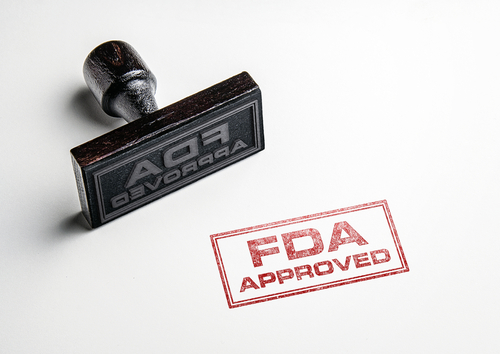Ruzurgi Approved in United States as First Treatment for Children with LEMS
Written by |

The U.S. Food and Drug Administration (FDA) has approved Ruzurgi (amifampridine) for the treatment of children ages 6–17 with Lambert-Eaton myasthenic syndrome (LEMS).
The approval makes Ruzurgi, developed by Jacobus Pharmaceutical, the only therapy approved for children with LEMS. In December 2018, the FDA announced the approval of Firdapse (amifampridine phosphate, developed by Catalyst Pharmaceuticals) for the treatment of adults with LEMS.
“We continue to be committed to facilitating the development and approval of treatments for rare diseases, particularly those in children,” Billy Dunn, MD, director of the division of neurology products in the FDA’s Center for Drug Evaluation and Research, said in a press release.
“This approval will provide a much-needed treatment option for pediatric patients with LEMS who have significant weakness and fatigue that can often cause great difficulties with daily activities,” he said.
Ruzurgi is an orally available formulation of amifampridine, which can block potassium channels in nerve cells and promote the opening of slow voltage-dependent calcium channels. This will enhance influx of calcium in nerve cells and support the release of more acetylcholine (Ach), which will in turn trigger neuromuscular transmission and improve muscle function.
This new therapy was evaluated in several clinical trials in both adults and children with LEMS as young as 3 months.
Ruzurgi had been granted FDA’s Priority Review and Fast Track designations, as well as Orphan Drug designation, which encourages therapies for rare and serious diseases, through benefits such as seven years of market exclusivity and exemption from FDA application fees.
The FDA’s decision to approve Ruzurgi for the pediatric population was supported by clinical data collected from adult LEMS patients, and controlled modeling and simulation to identify the dosing regimen and safety profile in patients ages 6–17. In particular, the regulatory agency based its decision on data from the Phase 2 trial called DAPPER (NCT01511978).
The study included 32 adult LEMS patients who had been taking Ruzurgi for at least three months before enrolling. Access to Ruzurgi was available through an FDA-approved compassionate use program.
Participants were randomized to continue the treatment with Ruzurgi, as 30 to 100 mg daily divided into at least three doses, or to stop Ruzurgi and switch to a placebo.
Researchers evaluated the impact of the treatment on muscle response and strength as determined by the Triple Timed-Up-and-Go (3TUG) test, which measures the time it takes for a patient to rise from a chair, walk a short distance (about 3 meters), and return to the chair for three consecutive laps without pause.
Results showed that patients taking Ruzurgi nonstop were able to perform the tasks in less time than those switched to placebo. Moreover, in a self-assessment report for LEMS-related weakness, patients switched from Ruzurgi to placebo reported increasing perceived weakening.
The most common side effects related to Ruzurgi in both children and adult LEMS patients included burning or prickling sensation (paresthesia), abdominal pain, indigestion, dizziness and nausea. In certain patients, the treatment was associated with seizures.




